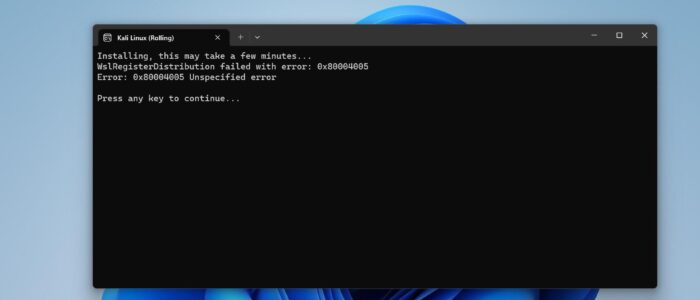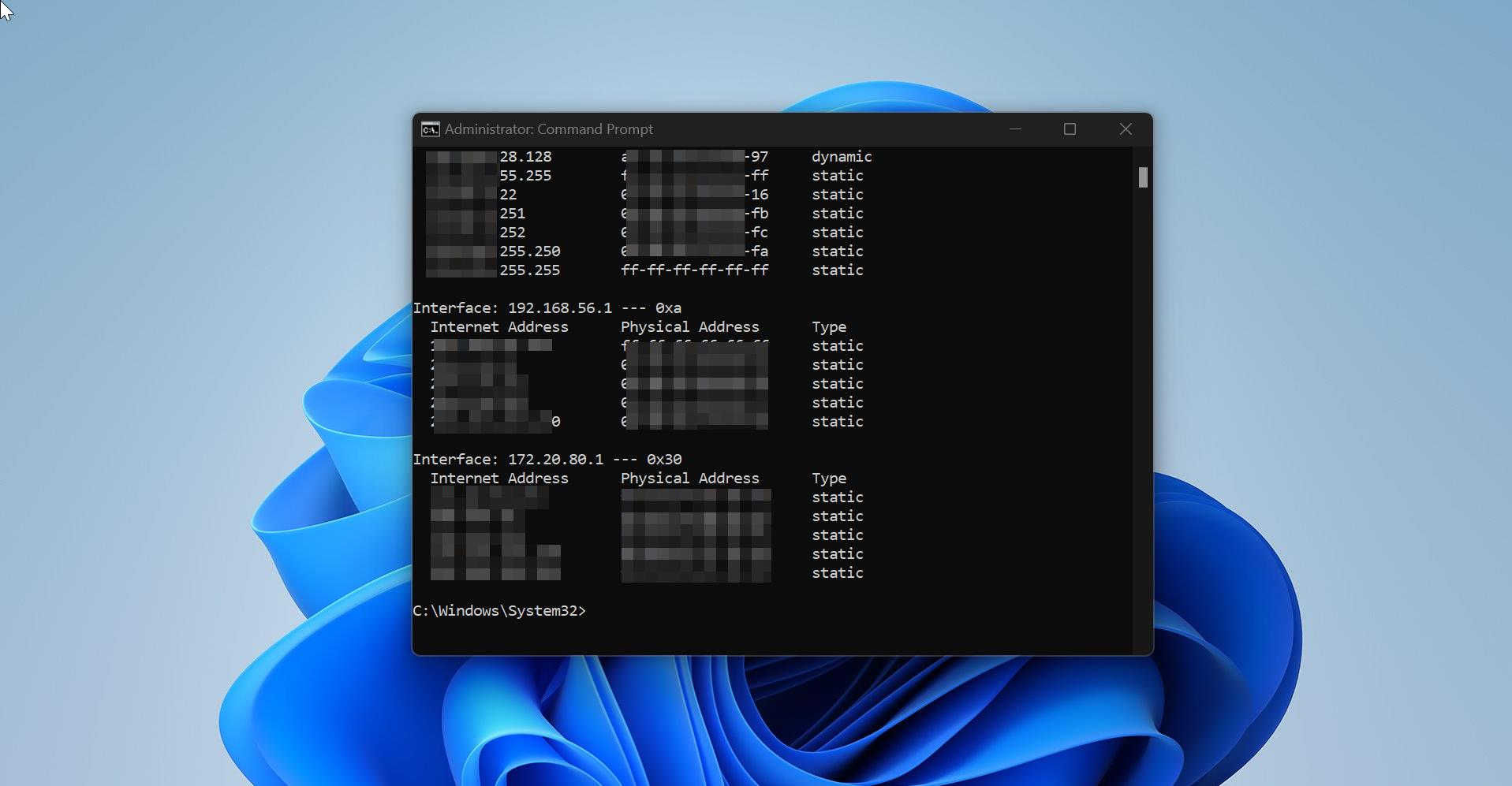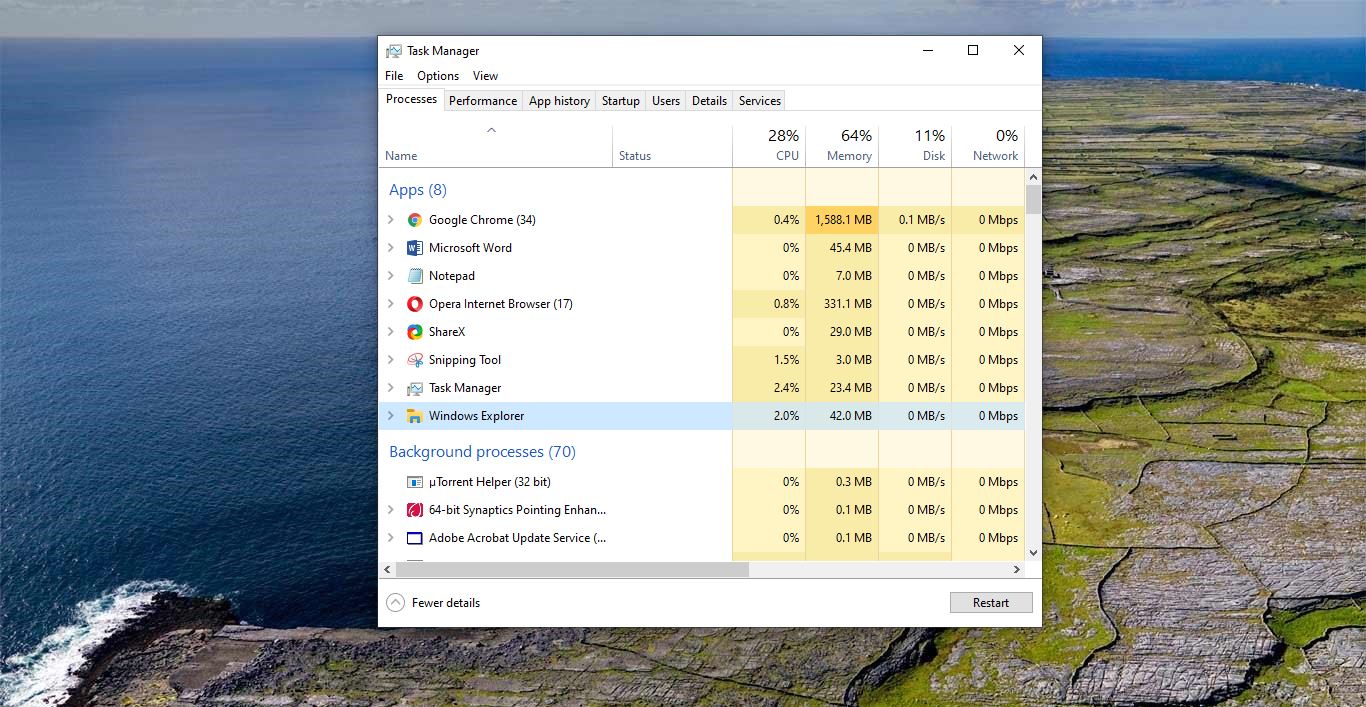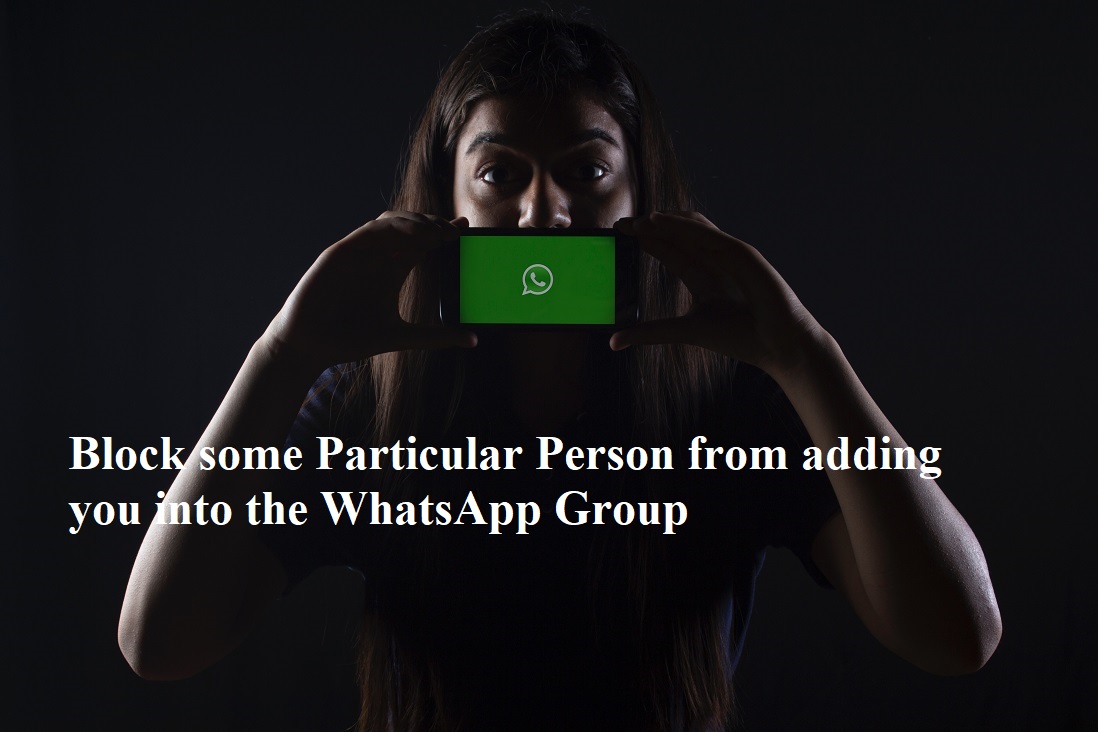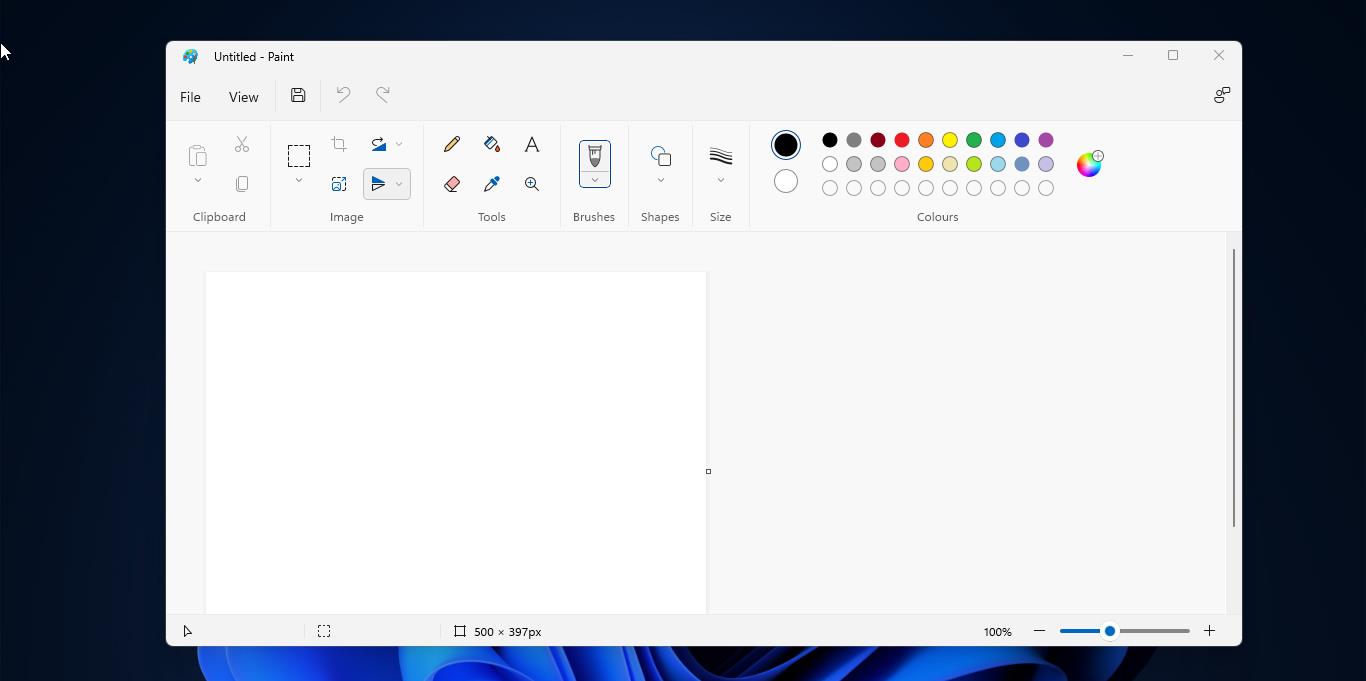If you encounter the error message “WslRegisterDistribution failed with error 0x80004005” while trying to use the Windows Subsystem for Linux (WSL) on your Windows 11 or Windows 10 system, don’t worry—this guide will help you to resolve this. This issue is commonly seen during either the installation or the launch of WSL distributions.
Full Error Message:
When the error occurs, you might see a message similar to this in your terminal:
Installing, this may take a few minutes...
WslRegisterDistribution failed with error: 0x80004005
Error: 0x80004005 Unspecified error
Press any key to continue...This Error Occurs during the following Scenarios
- During WSL Installation: The error may interrupt the process of installing a Linux distribution (e.g., Ubuntu or Debian) from the Microsoft Store.
- While Launching Installed WSL: Even after successfully installing a distribution, the error may occur when attempting to start the WSL environment.
This issue is often linked to misconfigurations, permission problems, or missing prerequisites on your Windows system.
What Causes “WslRegisterDistribution failed with error 0x80004005” Error?
- Incomplete or incorrect WSL installation.
- Disabled virtualization features in BIOS/UEFI settings.
- Outdated or incompatible versions of WSL.
- Permissions issues with WSL-related files or folders.
- A conflict with system services like LxssManager.
The following troubleshooting methods will guide you step-by-step to resolve this issue.
Fix WslRegisterDistribution Failed with Error 0x80004005 in Windows 11
Once you encounter this error, first restart your system once, restarting the system will install the pending updates. Post restart launch the WSL and check, if you are still facing the issue, then proceed with the following troubleshooting methods to resolve the issue.
Solution 1: Check the WSL is Turned ON
First, make sure the WSL optional feature is enabled or not. Search for Windows features on or off and click on it.
Under Windows features look for Windows Subsystem for Linux. Make sure the WSL is enabled. If not run the following command.
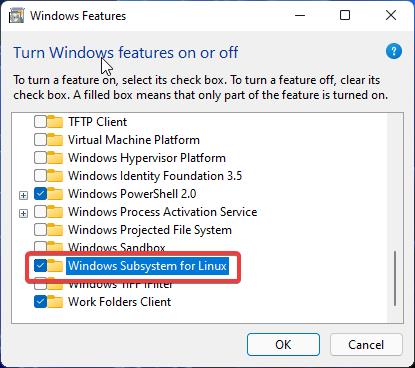
Open PowerShell in elevated mode and run the following command.
Enable-WindowsOptionalFeature -Online -FeatureName Microsoft-Windows-Subsystem-Linux

This command will enable the Windows Subsystem for Linux feature in Windows 10/11.
Note: If the WSL is already enabled, try to turn off the feature and turn it on again, this will mostly resolve the issue.
Solution 2: Turn on the Virtual Machine Feature
Make sure the Virtual Machine Feature is enabled or not, if not, run the following command to enable the Virtual Machine Feature.
Open PowerShell in elevated mode and run the following command.
dism.exe /online /enable-feature /featurename:VirtualMachinePlatform /all /norestartThis command will enable the Virtual Machine Platform feature, and restart your computer to apply all the Changes.
Solution 3: Restart the LxssManager services
Open Windows + R and type services.msc and hit enter, this command will open the Services Management Console.
Look for LxssManager service, if it’s not started start the service, and if it’s already running try to restart the service.
Try to set the service Startup type to automatic, right-click on the service and choose Properties.

Under Properties > General tab, set the Startup type to Automatic. Click on Apply and OK.
Solution 4: Update the WSL version
Try to update the WSL version, if you are using WSL1, then install WSL2, follow the below-mentioned steps to install WSL2.
First, Download WSL 2 Kernal Update.
You’ll get a .msi file, double click on the msi file to install WSL2.
Click on Next and then finish. That’s it you have successfully installed WSL2.
Next, we need to set the WSL2 as the default version, Open PowerShell in elevated mode, and type the following command.
wsl --set-default-version 2This command will set the WSL2 as the default version for all the Linux distros, if you want to set WSL2 version for specific Linux distros then type the following command.
wsl --set-version Ubuntu 2Just change the Linux distro name from the command if you want to change the WSL version for other Linux distro. That’s it.
Solution 5: Reinstall the Linux Distribution
If there is an issue with the problematic distribution, Reinstall the Linux Distribution.
Click on the start menu and search for the Linux Distribution, right-click on it, and choose Uninstall.
Or Use the PowerShell to Unregister the current distribution.
wsl --unregister <DistributionName>Replace the <DistributionName> with the name of your Linux Distribution. For example to unregister ubuntu Distribution, type wsl --unregister ubuntu.
Once it’s uninstalled, restart your system once and install New Linux Distribution from Microsoft Store.
Solution 6: Check Virtualization in BIOS/UEFI
WSL 2 requires hardware virtualization. Verify whether Virtualization is Enabled or not, you can easily Verify the Virtualization using TaskManager.
Open TaskManager and Click on the Performance Tab, Under Performance click on the CPU tab, here you can see the Virtualization status.

Restart your computer and enter the BIOS/UEFI settings.
Locate options like Intel Virtualization Technology or SVM Mode and ensure they are enabled.
Save changes and reboot.
By following these methods, you should be able to resolve the error “WslRegisterDistribution failed with error 0x80004005”.
Read Also:
Fix No Internet connection in WSL on Windows 11/10
How to remove WSL Linux distro using PowerShell in Windows 11?
How to install WSL2 in Windows 11?
Fix Process Exited with Code 4294967295 in WSL on Windows 11

